Yarilo (Jarilo): Slavic God Of Spring, Powerful Sexual Energy, Symbol Of Dying, Regeneration And Abundance
A.Sutherland - AncientPages.com - Jarilo was an important Slavic deity of spring, fertility, sowing of seed, dying and regeneration, and symbol of high sexual energy, sexual attraction, and passion in all living beings.
Yarilo by Andrey Shishkin - CC BY
In ancient beliefs, he was the lost son of the Slavic god of thunder, Perun. He was stolen from his father and taken to the world of the dead, where he was adopted and raised by Veles, Perun's enemy.
This Slavic deity played an important role in the dawn of Christianity, where Jarilo was the Slavic version of a Dionysos-like god of youth, and spring wearing a crown of flowers, and even Balder, a symbol of the dying and later resurrected god of fertility.
Jarilo was believed to stimulate reproduction taking place in nature, but this influence was extended only to inhabitants of their realm – Yav.
The world of Yav was 4-dimensional and contained people and other living beings. In ancient beliefs of the Slavs, Yav was the world surrounding us, and inside it, there were suns, stars, and solar systems. There were also celestial objects invisible to our senses.
Young Beautiful Man On A White Horse
Jarilo (Yarylo, Jarylo or Gerovit) was portrayed as a beautiful, barefoot young man wearing a long white robe. His head is crowned with a wreath of flowers and he moves around the world on a white horse.
He is seen holding a bunch of wheat ears in his left hand and a skull in his right.
High temples in honor of Yarilo were settled on the top of hills covered with trees. He was widely honored as a patron of all living things but without sacrifices.
The tops of the hills were cleared of vegetation and an idol was erected at this place, in front of which a large white stone was installed, which sometimes could be found at the foot of the hill.
Unlike most other gods, there were no sacrifices in honor of the god of spring. Usually Jarilo was worshiped by songs and dances in the temple. Each year, there were also organized spring festivals dedicated to this warmly welcomed god.
One of the participants was usually dressed up like the god Jarilo himself, and then this person became the center of the whole celebration. Sometimes special figures were made in the image of various people and brought to the temples. Then they were smashed against a white stone installed there.
It is believed it symbolized the blessing of Jarilo from which, both the harvest will be greater and the sexual energy higher.
All of these spring festivals, taking place in late spring or early summer, were basically alike. On a special day, processions of villagers would go around for a walk in the country or through villages.
Something or someone was identified to be Jarilo. a doll made of straw, a man or a child adorned with green branches, or a girl dressed like a man, riding on a horse.
Certain songs were sung which alluded to Jarilo's greatness and power, and his return from a distant land across the sea.
He was always greeted as a bringer of spring sunlight and abundance.
Written by – A. Sutherland - AncientPages.com Senior Staff Writer
Copyright © AncientPages.com All rights reserved. This material may not be published, broadcast, rewritten or redistributed in whole or part without the express written permission of AncientPages.com
More From Ancient Pages
-
 Ancient People In Peru Had A Unique Response To The Looting And Destruction Of Their Ancestors’ Graves
Archaeology | Feb 3, 2022
Ancient People In Peru Had A Unique Response To The Looting And Destruction Of Their Ancestors’ Graves
Archaeology | Feb 3, 2022 -
 Cyrus The Great Cylinder – Legacy Of The Ancients
Artifacts | Aug 25, 2015
Cyrus The Great Cylinder – Legacy Of The Ancients
Artifacts | Aug 25, 2015 -
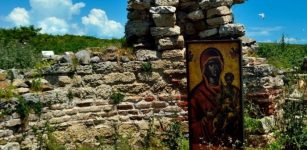 A 1,500-Year-Old Holy Well Probably With Healing Water – Discovered In Bulgaria
Archaeology | Nov 25, 2020
A 1,500-Year-Old Holy Well Probably With Healing Water – Discovered In Bulgaria
Archaeology | Nov 25, 2020 -
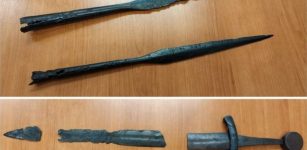 Swords And Spears Of The Yotvingians – A Long-Forgotten Ancient Warrior Culture Discovered In Poland
Archaeology | Jan 6, 2020
Swords And Spears Of The Yotvingians – A Long-Forgotten Ancient Warrior Culture Discovered In Poland
Archaeology | Jan 6, 2020 -
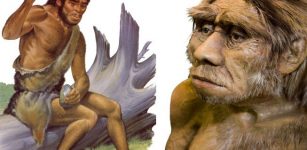 Neanderthal Genes Influence Your Mood And Much More – Study Shows
Archaeology | Oct 6, 2017
Neanderthal Genes Influence Your Mood And Much More – Study Shows
Archaeology | Oct 6, 2017 -
 Bizarre Parthian Tomb Sheds Light On Ancient Life In Isfahan, Central Iran
Archaeology | Jun 25, 2020
Bizarre Parthian Tomb Sheds Light On Ancient Life In Isfahan, Central Iran
Archaeology | Jun 25, 2020 -
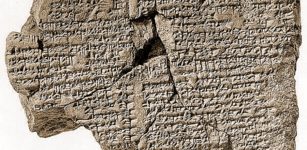 Utukku Lemnutu: Incantations Used As Therapy In Mesopotamia
Archaeology | Oct 25, 2016
Utukku Lemnutu: Incantations Used As Therapy In Mesopotamia
Archaeology | Oct 25, 2016 -
 On This Day In History: Battle Of Dettingen – English Armies Were Victorious Over The French – On June 27, 1743
News | Jun 27, 2016
On This Day In History: Battle Of Dettingen – English Armies Were Victorious Over The French – On June 27, 1743
News | Jun 27, 2016 -
 The Lost Prophecy Reveals Chilling Future Events – The Last Words To Mankind?
Featured Stories | Jan 24, 2015
The Lost Prophecy Reveals Chilling Future Events – The Last Words To Mankind?
Featured Stories | Jan 24, 2015 -
 Are Priceless Ancient Gold Tablets Of The Serpent People Hidden Underground In Los Angeles?
Ancient Mysteries | May 24, 2014
Are Priceless Ancient Gold Tablets Of The Serpent People Hidden Underground In Los Angeles?
Ancient Mysteries | May 24, 2014 -
 Jedek: Previously Unidentified Language Found By Swedish Linguists In in Southeast Asia
Linguistic Discoveries | Feb 9, 2018
Jedek: Previously Unidentified Language Found By Swedish Linguists In in Southeast Asia
Linguistic Discoveries | Feb 9, 2018 -
 India’s Tradition Of Advanced Metallurgy, Craftsmen And Blacksmiths Is Longer Than Thought
Ancient Technology | Mar 19, 2019
India’s Tradition Of Advanced Metallurgy, Craftsmen And Blacksmiths Is Longer Than Thought
Ancient Technology | Mar 19, 2019 -
 Small Stone Carved With A Viking Ship May Be Oldest Picture Ever Found In Iceland
Archaeology | Jun 16, 2023
Small Stone Carved With A Viking Ship May Be Oldest Picture Ever Found In Iceland
Archaeology | Jun 16, 2023 -
 Mysterious Ancient Lost Civilization Of North America Had Interest In One Particular Constellation
Ancient Mysteries | Apr 17, 2018
Mysterious Ancient Lost Civilization Of North America Had Interest In One Particular Constellation
Ancient Mysteries | Apr 17, 2018 -
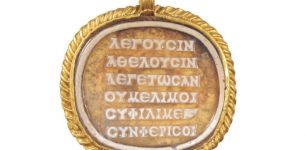 Almost Unknown Ancient Greek Text Rewrites History Of Poetry And Song
Archaeology | Sep 9, 2021
Almost Unknown Ancient Greek Text Rewrites History Of Poetry And Song
Archaeology | Sep 9, 2021 -
 Enigma Of San Bernardo Mummies That Refuse To Decompose
Featured Stories | Nov 7, 2018
Enigma Of San Bernardo Mummies That Refuse To Decompose
Featured Stories | Nov 7, 2018 -
 3,500-Year-Old Neo-Hittite Hieroglyphs Found In Cappadocia
Archaeology | May 27, 2019
3,500-Year-Old Neo-Hittite Hieroglyphs Found In Cappadocia
Archaeology | May 27, 2019 -
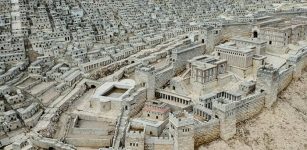 Early City Planning In The Kingdom Of Judah Examined
Archaeology | Jul 5, 2023
Early City Planning In The Kingdom Of Judah Examined
Archaeology | Jul 5, 2023 -
 On This Day In History: Parachute Jump From 1,000 m Above Paris Is Recorded – On Oct 22, 1797
News | Oct 22, 2016
On This Day In History: Parachute Jump From 1,000 m Above Paris Is Recorded – On Oct 22, 1797
News | Oct 22, 2016 -
 On This Day In History: Tokugawa Shogunate Begins In Japan After Historical Battle – On Oct 21, 1600
News | Oct 21, 2016
On This Day In History: Tokugawa Shogunate Begins In Japan After Historical Battle – On Oct 21, 1600
News | Oct 21, 2016

